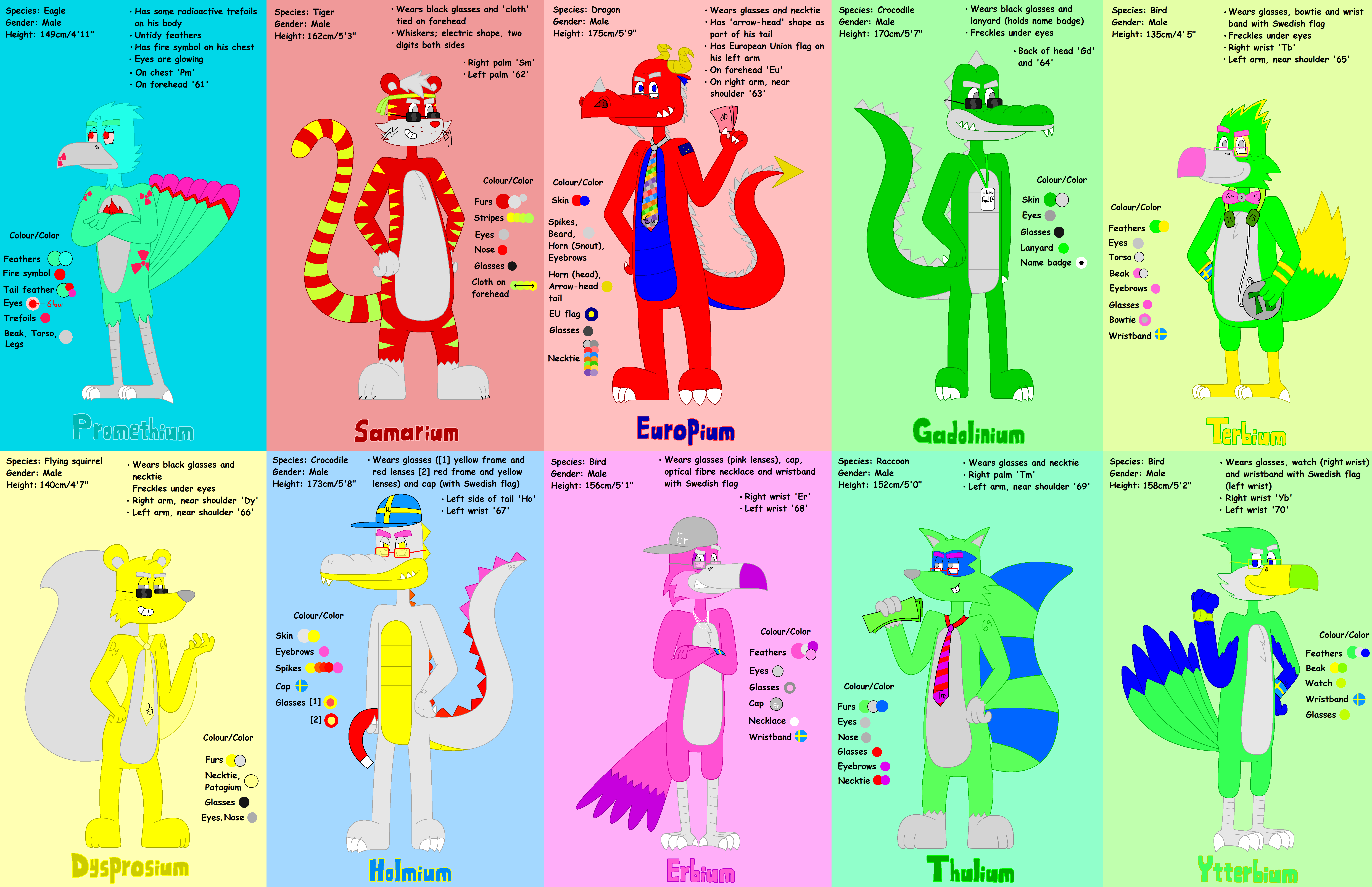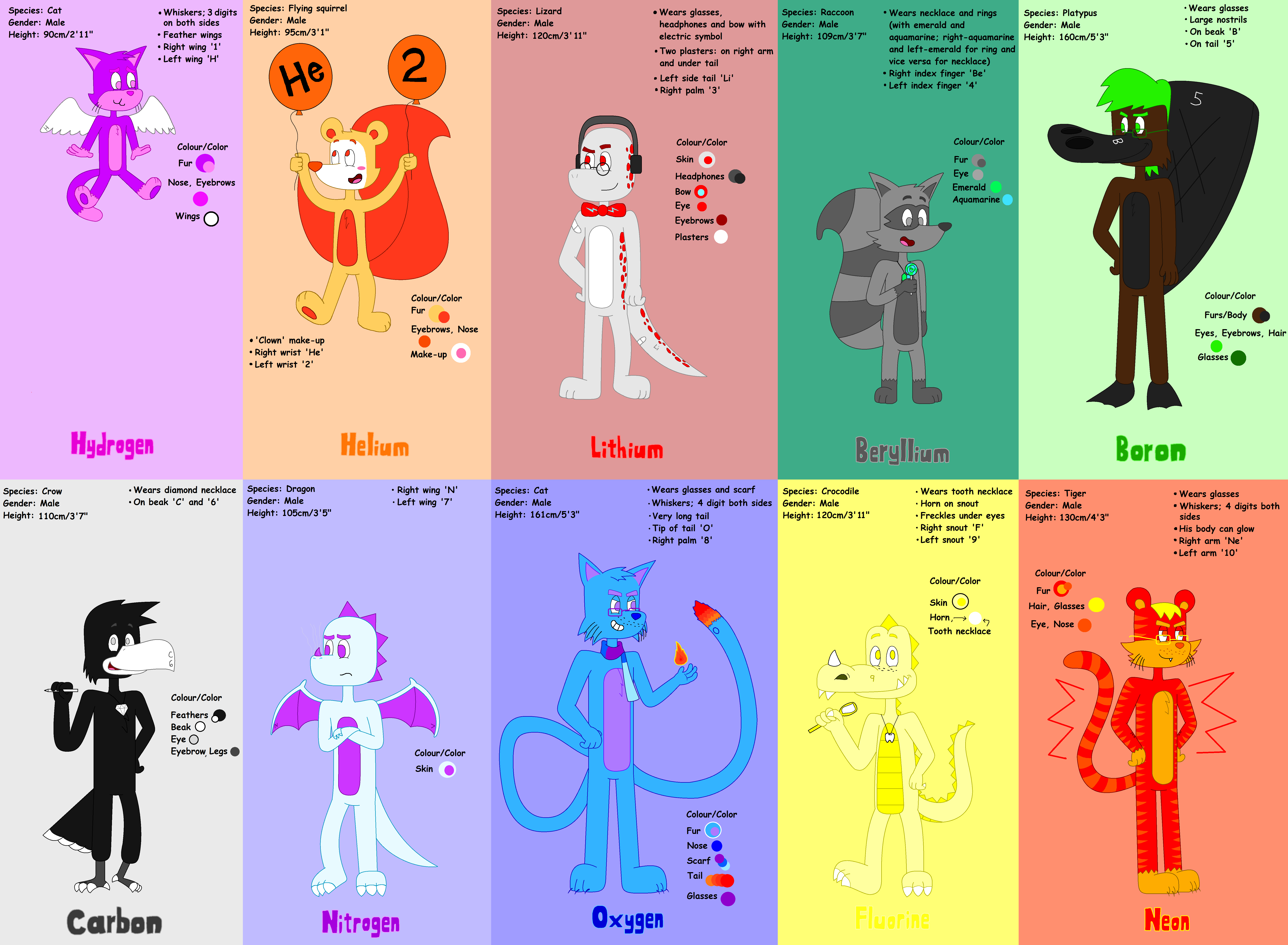HOME | DD
 Borontheplatypus — 50 Tin/Stannum the lizard Reference
Borontheplatypus — 50 Tin/Stannum the lizard Reference

#chemistry #elements #lizard #periodictable #periodictableoftheelements #stannum #tin #tinthelizard #stannumthelizard
Published: 2019-08-27 18:05:27 +0000 UTC; Views: 1486; Favourites: 7; Downloads: 1
Redirect to original
Description
Name: Tin
Other name: Stannum
Atomic symbol: Sn
Atomic number: 50
Species: Lizard
Gender: Male
Age: ? (Unknown real age), 30 years old outside
Height: 115cm/3' 9"
Category: Post-transition metal , Crystallogen
Colour scheme and design concept:
- Silvery white and grey – Tin forms two common allotropes: α-tin (gray) and β-tin (white)
- Wears tin can on his head, as a cap, and glasses
- Labelling on the tin can is bronze colour (Copper-Tin alloy)
- His back written ‘10’ and ten spots on his tail – Tin has ten stable isotopes (largest number of stable isotopes)
- ‘Sn’ marking on his forehead
- ‘50’ marking on right palm
Colour code (Hex Code (#RRGGBB ), Decimal Code (R, G, B)):
- Silvery white 1 (main skin): Hex Code - d1d1d1, Decimal Code – (209, 209, 209)
- Gray (secondary skin): Hex Code - 919191, Decimal Code – (145, 145, 145)
- Dark grey (glasses frame): Hex Code - 191919, Decimal Code – (25, 25, 25)
- Silvery white 2 (cap): Hex Code - b6b6b6, Decimal Code – (182, 182, 182)
- Bronze (cap): Hex Code - f88216, Decimal Code – (248, 130, 22)
Font used: Cabal font
- Cool, confident, friendly and helpful
- “Screams” when shocked and surprised (a crackling sound can be heard when a bar of tin is bent, known as the "tin cry")
- When gets angry, makes “annoying” noise, like how Donald Duck “quacking aggressively” when in his explosive temper (which is ironic since tin has the largest number of stable isotopes)
- Though, he is warm and nice deep down
- Really hates cold, and until his body temperature falls to 13°C he can get sick* (White Tin turns Grey Tin below 13.2 °C, known as Tin pest ). Hence, he has a lot of heaters in his house and his heaters often turn on, especially during winter
- Close friends with other Crystallogens (especially Lead ) and most of the metals (especially Silver , Iron , Copper , Zinc , Gallium , Indium , and Bismuth ), even Antimony ** and Fluorine (Tin(II) fluoride/Stannous fluoride (SnF 2) added into toothpaste)
- Works in joining pipes or electric circuits (Tin alloys used as a solder), electronics-related (such as Indium Tin Oxide , Li-ion batteries and superconducting magnets (niobium-tin alloy is used for superconducting magnets)) and making window glass (Window glass is most often made by floating molten glass on molten tin (float glass ), resulting in a flat and flawless surface)
- Loves to play musical instruments such as tin whistle, pipe organ, and Bell metal
* He needs a ‘very warm rest’ to make him better (Grey Tin can transform back to White tin by melting it, and this process is faster than the vice versa)
** [1] Tin alloys with these metals (including Antimony) [2] Antimony and Bismuth added to Tin to prevent the decomposition of Tin pest [3] The Latin name ‘stannum’ originally meant an alloy of silver and lead [4] Pewter is an alloy consists of 85–99% tin, mixed with copper, antimony, bismuth, and sometimes silver or lead























